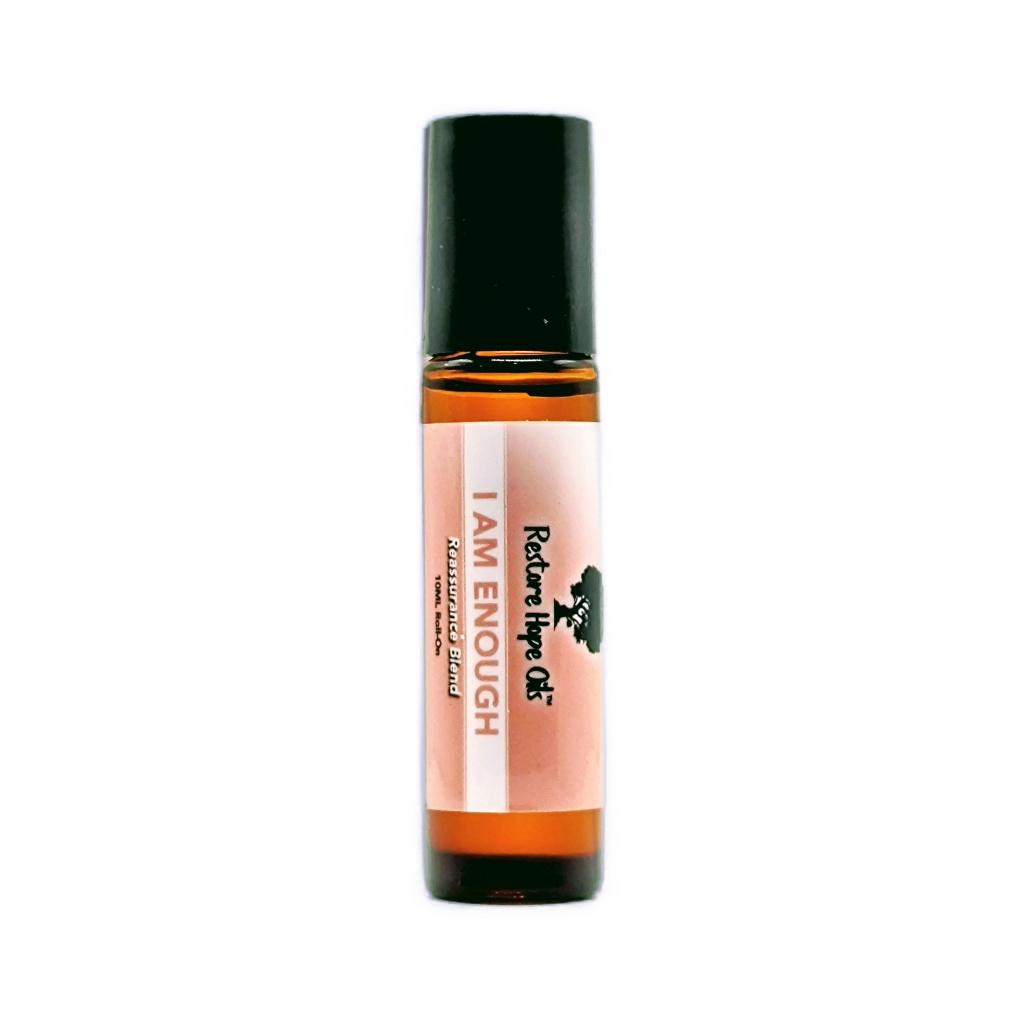
Beyond Sesquiterpenes: Understanding How Different Terpenes Support Brain Health
I've been getting a lot of questions lately about brain health and essential oils, and I've noticed a pattern. Many of you have heard that oils high in sesquiterpenes are "the best" for the brain because they can cross the blood-brain barrier.
While that's partially true, it's not the complete picture – and today I want to share the rest of the story with you. Understanding this will help you make much better choices about which oils to use and when to use them.
First, Let's Talk About the Blood-Brain Barrier
The blood-brain barrier is a tightly knit group of blood vessels and tissue cells that keep harmful substances from entering the brain. In essence, it's an immunological barrier designed to protect one of our most vital organs.
Think of it as the most selective security system imaginable. Only very specific things can pass through:
-
Oxygen
-
Water
-
Glucose
-
Really small molecules
-
A few other carefully selected substances
Many drugs and chemicals simply cannot pass through the blood-brain barrier. This protective mechanism is both brilliant and, at times, challenging when we want to support brain health.
The Sesquiterpene Story (And Why It's Incomplete)
Here's what many people have learned: Sesquiterpenes are plant chemicals that can cross the blood-brain barrier. This is absolutely true, and it's fascinating!

Because of these properties, sesquiterpenes are fantastic for brain support – especially when the brain needs calming, protection, or recovery. They're my go-to oils for things like head trauma recovery, helping someone wind down from overstimulation, or supporting someone who needs that deep, restorative brain support.
But here's what I need you to understand: Sesquiterpenes are not the only oils good for the brain.
Sometimes, for the sake of simplicity in my emails, I have to be brief. But I don't want brevity to create an incomplete understanding.
Enter Monoterpenes: The Other Brain Supporter
Monoterpenes can also cross the blood-brain barrier.
These are lighter, quicker molecules found in many essential oils. Here's where it gets interesting – monoterpenes don't all act the same way. Some stimulate, and some calm.


The key is understanding that it's not just about whether something is a monoterpene or sesquiterpene – it's about the specific chemical constituents within those categories and how they interact with the brain.
The Research Shows Us Both Matter
There are interesting studies done in Japan using essential oils for people experiencing dementia and memory challenges. In one study with 28 elderly participants (17 with Alzheimer's disease), researchers used aromatherapy over 28 days.
What I really appreciate about this study is that the researchers knew their oils well enough to understand timing and brain response. They used:
-
Rosemary and Lemon in the morning (stimulating monoterpenes to activate the brain)
-
Lavender and Orange at night (calming monoterpenes to help the brain rest)
The result? All patients showed significant improvement in personal orientation related to cognitive function.
Do you see what's happening here? The researchers understood that the brain needs different support at different times.
☀️ Morning oils with stimulating monoterpenes helped wake up and activate cognitive function.
🌙 Evening oils with calming monoterpenes helped the brain settle and recover.
This is brilliant because it shows us that both monoterpenes and sesquiterpenes can support the brain – we just need to know which ones do what.
Adding Sesquiterpenes to the Mix
Now, while that study used monoterpenes for both morning stimulation and evening calming, I often reach for sesquiterpene-rich oils when I want deep, grounding calm – especially for evening brain support.
For example, our Remember Him blend has been praised by many in our customer base for helping calm the body to sleep during times of seasonal illness. That's largely due to the combination of oils like Cedarwood, Copaiba, and Frankincense – all high in sesquiterpenes.
When Carrie had a concussion I would apply essential oils to her neck to support the brain at night, but one does not need to experience a concussion to receive benefit from the following practice. I would often apply Remember Him to her brain stem area, as 6 of the 8 essential oils in the blend are very high in sesquiterpenes and have neuroprotective properties.

I also love I Am Still for evening support. It contains both Lavender (calming monoterpenes) and Vetiver (sesquiterpenes). This combination provides both quick-acting calm and deeper, longer-lasting support.

Another beautiful example of this synergy is our Mental Stillness blend. It combines calming monoterpenes from Orange, Lavender, and Petitgrain with the deeper sesquiterpene support of Copaiba and Peru Balsam. This blend brings together both types of compounds to provide layered support – the monoterpenes offer that initial calming effect while the sesquiterpenes provide sustained, grounding support throughout the night.
Why This Distinction Matters
Let me give you a practical example that shows why understanding this matters.
I've seen many websites suggest applying stimulant oils like Rosemary and Peppermint immediately after a concussion. While I love both of these oils for brain support, I don't fully agree with this timing.
After a head trauma, the brain is overstimulated. Just like we're advised to avoid screen time after a concussion because of the stimulation, my opinion is that oils with stimulating monoterpenes may be too activating in those early days.
This is when sesquiterpene-rich oils shine – or even calming monoterpenes like Lavender. They provide that protective, anti-inflammatory, calming support the brain desperately needs during recovery.
But – and this is important – once someone has moved past the acute recovery phase, or if we're supporting general cognitive function and memory, those stimulating monoterpenes become incredibly valuable.
Making Better Choices: It's About Function, Not Just Chemistry
So how do you decide which to use? Think about what your brain needs in that moment.


A Note on Rosemary's Balance:
I want to mention something important about Rosemary because it shows how beautifully complex these oils can be.
Rosemary can stimulate brain function, but also – due to its makeup – it can help reduce stress and possible inflammatory levels in the body as well. It does this better than other oils that have the same main chemical constituent (1,8 Cineole).
This is a perfect example of why I always say: essential oils are more than just their chemistry. The whole plant matters. The synergy of all the compounds working together matters.

Not all Rosemary oils are created equal, either. I prefer the 1,8 Cineole chemotype, which is what we sell at Restore Hope Oils.
Caution with Rosemary: Due to its high brain stimulatory nature, I would not diffuse this around people who suffer from epilepsy or seizures in general. Rosemary may increase brain stimulation to an undesired level and possibly cause a seizure episode.
Essential Oils Are Messengers
Friends, essential oils in their most basic form are messengers or communication enhancers. They're not pharmaceuticals, and they never will be.
When we understand that both monoterpenes and sesquiterpenes can reach the brain – but that they serve different purposes and even within each category there are different effects – we can make much more informed decisions about what our bodies need in any given moment.
Your brain doesn't need just one type of support. Sometimes it needs activation. Sometimes it needs calming. Sometimes it needs protection. Sometimes it needs cleansing.
The key is learning to listen to what your body is asking for and choosing the right messenger for that moment.
Putting This Into Practice: Application Guide
Now that we understand how different terpenes support the brain, let's talk about how to actually use these oils. I'm going to share some of my favorite blends and how to apply them, but remember – while I'll mention when most people find these helpful (morning vs. evening), what matters most is listening to your body.
Life and oils aren't that concrete. Your body will tell you what it needs and when.
Oils for Mental Stimulation and Activation
When to consider these: When you need mental clarity, memory support, focus, or cognitive activation. Many find these most helpful in the morning or during the day, but use them whenever your body is asking for this kind of support.
This is a perfect example of what we discussed about Rosemary's complexity. It contains Orange, Rosemary ct. Cineole, Peppermint, and Ginger in Fractionated Coconut Oil.
-
Application: Apply 3-4 swipes to the back of the neck and shoulders. Massage in and take a moment to inhale.
-
Why I love it: The Rosemary stimulates brain function while also helping to reduce stress. The combination provides activation without being overwhelming.
Contains Grapefruit, Coriander, Pink Pepper, Black Pepper, Ginger, Clove, and Cinnamon Bark in Fractionated Coconut Oil.
-
Application: Apply 3-4 swipes to the neck and shoulders, or over the solar plexus when you need that extra emotional lift.
-
Why I love it: This blend helps stimulate the mind and emotions when we need encouragement for breakthroughs.
Pure Happy (Traditional Blend):
Contains Lemon, Lime, Peppermint, and Balsam of Peru.
-
Application: Apply 1-2 drops with ½ teaspoon of carrier oil to the neck and shoulders, or diffuse 6-8 drops for 30-60 minutes.
-
Why I love it: The citrus oils combined with Peppermint provide excellent mental activation and cleansing for the nervous system.
Oils for Calming, Grounding, and Recovery
When to consider these: When you're seeking relief from overwhelm, burnout, anxiety, or overstimulation. When your brain needs to wind down or recover. Many find these easiest to remember at night, but use them throughout the day whenever your body asks for this support.
I Am Enough (Original) Roll-On:
Contains Clary Sage, Coriander, Vetiver, and Geranium in Fractionated Coconut Oil.
-
Application: Apply 3-4 swipes to the wrists, over the adrenal area (kidney area on your lower back), or to the neck and shoulders.
-
Why I love it: Clary Sage is a floral oil that accepts us as we are while helping us move through emotions. The Vetiver provides deep sesquiterpene support that grounds and calms.
I Am Enough Rose Edition Roll-On:
The original formula with the addition of Rose Absolute.
-
Application: Apply 3-4 swipes over the adrenals (this can be especially powerful), over the heart, or on the wrists.
-
Why I love it: Rose is a heart and mind protector. This blend combines calming influence with an underlying cleansing capacity for emotions. The sesquiterpenes in the Vetiver and the compounds in Rose work beautifully together.
Mental Stillness (Traditional Blend):
Contains Orange, Lavender, Petitgrain, Copaiba, and Peru Balsam.
-
Application: Apply 2-3 drops with ½ to 1 teaspoon of carrier oil to the neck and shoulders, base of skull, or bottom of feet before bed or when needing to calm mental chatter.
-
Why I love it: This is a perfect example of combining calming monoterpenes (Orange, Lavender, Petitgrain) with sesquiterpenes (Copaiba, Peru Balsam) for layered support – quick-acting calm with sustained grounding.
Contains Cedarwood, Cypress, Copaiba, Orange, Frankincense Carterii, and other oils.
-
Application: Apply 1-2 drops with ½ teaspoon of carrier oil to the brain stem area (base of skull), neck and shoulders, or down the spine.
-
Why I love it: Six of the eight oils in this blend are very high in sesquiterpenes and neuroprotective compounds. This has been praised for helping calm the body to sleep during times of seasonal illness.
Contains Lavender and Vetiver among other oils.
-
Application: Apply 2-3 drops with carrier oil to the neck and shoulders, down the spine, or to the bottom of feet.
-
Why I love it: The combination of Lavender (calming monoterpenes with neuroprotective properties) and Vetiver (restorative sesquiterpenes) provides both quick and sustained support.
For Overall Brain and Central Nervous System Support
Contains Tangerine, Neroli, Patchouli, Sandalwood, Litsea Cubeba, Turmeric, and Ylang Ylang in Fractionated Coconut Oil.
-
Application: Apply 3-4 swipes over the heart, along the spine, on the wrists, or over the solar plexus.
-
Why I love it: This is a very complex blend for brain and CNS support. It's cellular-focused and supports the entire emotional system. It can be especially helpful when we experience moments of emotional trauma or when we start to feel disconnected from ourselves and others.
General Application Notes
For children: Always dilute more than you would for adults. For roll-ons, you may want to apply additional carrier oil over the area after applying. For traditional blends, use 1 drop per 2-3 teaspoons of carrier oil for children.
Frequency: Most of these can be applied 2-4 times daily as needed. Listen to your body. If you feel you need more support, apply more frequently. If the scent or effect feels too strong, dilute more or apply less frequently.
Key application areas for brain support:
-
Base of skull and neck (direct access to brain stem)
-
Shoulders and upper back (nervous system support)
-
Spine (houses the nerves, engages the entire body)
-
Bottom of feet (many nerve endings, good for when scent is too strong near the nose)
-
Over adrenals/kidney area (for stress and emotional support)
Remember, friends – these are guidelines based on what I've found helpful and what many in our community have shared. Your body is unique. Pay attention to how you respond and adjust accordingly.
The Bottom Line
Don't limit yourself to only sesquiterpene oils for brain health. They're wonderful, and they absolutely have their place – but monoterpenes bring their own powerful benefits.
Some monoterpenes stimulate and activate. Some monoterpenes calm and soothe. Most sesquiterpenes provide deep, grounding calm and protection.
The best approach? Understanding what each offers and using the right oil for the right situation.
Your brain is complex and magnificent. It deserves support that honors that complexity.
As always, reach out with any questions to support@restorehopeoils.com
Keep smiling and essential oil on,
![]()

